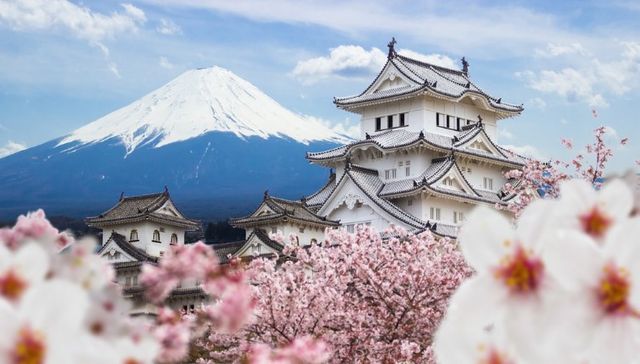9.2.1
Hard & Soft Power
Hard Power vs Soft Power
Hard Power vs Soft Power
Power can be measured on a continuum of hard and soft power.


Hard power
Hard power
- Hard power is where a country expresses its influence through coercive measures. This can be economic sanctions or military force or threat.
- Hard power is becoming less common. Countries are beginning to use economic sanctions instead of military force.
- For example, the UK and USA imposed sanctions on Iran because of its nuclear program rather than using force.
- Currently, China performs better in terms of its military size ( a sign of potential hard power) than it does in measures of soft power. This could change over time and Chinese funding for African infrastructure seems to be an attempt to shift this.


Soft power
Soft power
- Soft power is where a country expresses its influence through its economic, political, moral or cultural influence. It does not physically enforce anything in another country.
- An example of soft power by America is its cultural exports from its global media TNCS. In 2017, France topped the soft power ranking of one particular organisation. This is because of the popularity of its president who supports the EU, France’s membership to many IGOs and France’s rich culture.
- Globalisation seems to be making soft power more and more important.


Examples of soft power
Examples of soft power
- A 2019, Department for Education meeting in the UK discussed the importance of soft power when mentioning the UK's universities.
- In the 1857, Hotta Masayoshi, a Japanese minister wrote that Japan should 'conduct trade, and copy foreigners...to foster strength and gradually subject the foreigners to our influence until our hegemony is acknowledged throughout the globe'.
Patterns of Power - Colonial
Patterns of Power - Colonial
Patterns of power change over time and can be uni (one power), bi (two powers) or multi (lots of powers). In the imperial era, nations (or superpowers) directly controlled other nations or colonies.


Multi-polar world
Multi-polar world
- During the colonial era, there were lots of powers.
- France, the Netherlands, Britain, Spain and Portugal were the main colonial powers.
- This period of time extended up to 1939.
- Lots of different superpowers influenced different regions. The British Empire was the largest region controlled.


The British Empire
The British Empire
- At the time, British people believed that they were right to colonise these regions. They believed this because land gave them power and they could take raw materials from these colonies to use in their own manufacturing.
- Britain generally exerted hard power. In 1919, at the Jallianwala Bagh massacre, around 380 Indian protesters were killed by British forces.


Hard power
Hard power
- Although many colonies were taken without force, colonial power was maintained with hard power.
- In the 21st century, some people argue that a form of colonialism still exists through neo-colonialism (and institutions like the IMF and World Bank).
- Neo-colonialism is where less-developed countries are still indirectly controlled by superpowers through economic, cultural or political methods. However, this is softer power than the power used in the colonial era.
Patterns of Power - Bi-Polar World
Patterns of Power - Bi-Polar World
After World War Two ended, a bi-polar world emerged with the USA and USSR as the two global powers. This era saw indirect control and soft power become more important. The competition between the two superpowers created the Cold War.


Military control
Military control
- Both the US and USSR had nuclear weapons and large militaries.
- The USA maintained a huge military force. Although it was never used against the USSR in the Cold War, the threat was significant.
- The USSR had a large influence in Eastern Europe.
- As a result of the Cold War, two alliances formed in different regions of Europe.
- Those countries supporting the USSR formed the Warsaw Pact and the Council for Mutual Economic Assistance.
- Those countries supporting the USA formed the North Atlantic Treaty Organisation (NATO)- which remains important today.


Economic control
Economic control
- After 1945, most European countries faced severe economic problems as a result of their spending on the war.
- The USA set up the Marshall Plan where they gave $12bn of financial aid to European countries to help them rebuild war damage, promote economic development and prevent poverty.
- The belief was that through promoting economic development, the US would be able to stop the spread of communism. They believed that poverty was the root cause of communism.


Neo-colonialism
Neo-colonialism
- As well as the Marshall Plan, The US also used strategies to extend its economic influence in Asia.
- It provided inward investment to countries such as Japan, Singapore and the Philippines to promote economic growth and stop the spread of communism.
- This influence is known as neo-colonialism and still continues today in different forms.


Cultural control
Cultural control
- In the Cold War no military force was used. Instead, it was a war fought through propaganda and messages.
- In America, their propaganda centred around ensuring that communists were viewed as suspicious and untrustworthy.
- McCarthyism was the name given to the act of accusing people of being communist sympathisers and traitors without much evidence. It happened in the USA in the 1950s.


Political power
Political power
- After World War Two, the post-colonial era saw the growth of political influence and neo-colonialism rather than direct, or military rule.
- A good example of this is many Eastern European countries.
- They were not directly ruled by Moscow but when elections were held, all candidates were members of the Communist party who had been approved by Moscow.
- However, sometimes direct power was used. In the Hungarian Revolution of 1956, Soviet troops entered Budapest and replaced the Hungarian leader, Imre Nagy, who was executed.


End of the Cold War
End of the Cold War
- Since the end of the Cold War and the fall of the Berlin wall (in 1989), the USA has been the sole superpower in a uni-polar world.
- This has enabled it to become a hegemon.
- It has not been rivalled in terms of its economic, cultural, political or military strength. However, China increasingly looks a threat to the USA in terms of power.
1Tectonic Processes & Hazards
1.1Tectonic Processes & Hazards
1.2Natural Disasters
1.3Natural Disaster Case Studies
1.4Trends & Patterns
2Option 2A: Glaciated Landscapes & Change
2.1Glaciated Landscapes Over Time
2.2Periglacial Landscapes
2.3Glacial Processes
2.4Glacial Landforms
3Option 2B: Coastal Landscapes & Change
3.1Coastal Landscapes
3.2Coastal Erosion & Deposition
3.3Coastal Risks
4Globalisation
4.1Globalisation
4.2Negatives of Globalisation
4.3Global Shift
4.5Culture
4.6Measuring Development
5Option 4A: Regenerating Places
5.1Types of Economies
5.2Function of Places
5.3Regeneration
5.4Regeneration Case Studies
6Option 4B: Diverse Places
6.1Population Structure
6.2Past & Present Connections
6.3Urban & Rural Spaces
6.4Diversity
6.5Urban & Rural Case Studies
6.6Case Study - Tower Hamlets
6.7Case Study - Sturton-le-Steeple
7The Water Cycle & Water Insecurity (A2 only)
7.1Hydrological Processes Global to Local
7.2Influences on the Water Cycle
7.3Water Insecurity
8The Carbon Cycle & Energy Security (A2 only)
8.1The Carbon Cycle
8.2Energy Consumption
8.3Alternative Energy
8.4Growing Demand for Resources
9Superpowers (A2 only)
9.1Superpowers
9.2Hard & Soft Power
9.2.1Hard & Soft Power
9.2.2Emerging Powers - China Rivalry
9.2.3Emerging Powers - Chinese Sources of Power
9.2.4Emerging Powers - Brazil
9.2.5Emerging Powers - Russia
9.2.6Emerging Powers - India
9.2.7Theories of Development
9.2.8Power Case Studies: Chinese One Belt One Road
9.2.9Power Case Studies: Pakistan Nuclear Arms
9.2.10Power Case Studies: OPEC
9.3IGOs, TNCs & Alliances
10Option 8A: Health & Human Rights (A2 only)
10.1Human Development
10.2Role of Governments & IGOs
10.3Human Rights
10.4Interventions
11Option 8B: Migration & Identity (A2 only)
11.1Globalisation & Migration
11.2Consequences of Migration
11.3Nation States
11.4Responses to Global Migration
Jump to other topics
1Tectonic Processes & Hazards
1.1Tectonic Processes & Hazards
1.2Natural Disasters
1.3Natural Disaster Case Studies
1.4Trends & Patterns
2Option 2A: Glaciated Landscapes & Change
2.1Glaciated Landscapes Over Time
2.2Periglacial Landscapes
2.3Glacial Processes
2.4Glacial Landforms
3Option 2B: Coastal Landscapes & Change
3.1Coastal Landscapes
3.2Coastal Erosion & Deposition
3.3Coastal Risks
4Globalisation
4.1Globalisation
4.2Negatives of Globalisation
4.3Global Shift
4.5Culture
4.6Measuring Development
5Option 4A: Regenerating Places
5.1Types of Economies
5.2Function of Places
5.3Regeneration
5.4Regeneration Case Studies
6Option 4B: Diverse Places
6.1Population Structure
6.2Past & Present Connections
6.3Urban & Rural Spaces
6.4Diversity
6.5Urban & Rural Case Studies
6.6Case Study - Tower Hamlets
6.7Case Study - Sturton-le-Steeple
7The Water Cycle & Water Insecurity (A2 only)
7.1Hydrological Processes Global to Local
7.2Influences on the Water Cycle
7.3Water Insecurity
8The Carbon Cycle & Energy Security (A2 only)
8.1The Carbon Cycle
8.2Energy Consumption
8.3Alternative Energy
8.4Growing Demand for Resources
9Superpowers (A2 only)
9.1Superpowers
9.2Hard & Soft Power
9.2.1Hard & Soft Power
9.2.2Emerging Powers - China Rivalry
9.2.3Emerging Powers - Chinese Sources of Power
9.2.4Emerging Powers - Brazil
9.2.5Emerging Powers - Russia
9.2.6Emerging Powers - India
9.2.7Theories of Development
9.2.8Power Case Studies: Chinese One Belt One Road
9.2.9Power Case Studies: Pakistan Nuclear Arms
9.2.10Power Case Studies: OPEC
9.3IGOs, TNCs & Alliances
10Option 8A: Health & Human Rights (A2 only)
10.1Human Development
10.2Role of Governments & IGOs
10.3Human Rights
10.4Interventions
11Option 8B: Migration & Identity (A2 only)
11.1Globalisation & Migration
11.2Consequences of Migration
11.3Nation States
11.4Responses to Global Migration
Unlock your full potential with Seneca Premium
Unlimited access to 10,000+ open-ended exam questions
Mini-mock exams based on your study history
Unlock 800+ premium courses & e-books